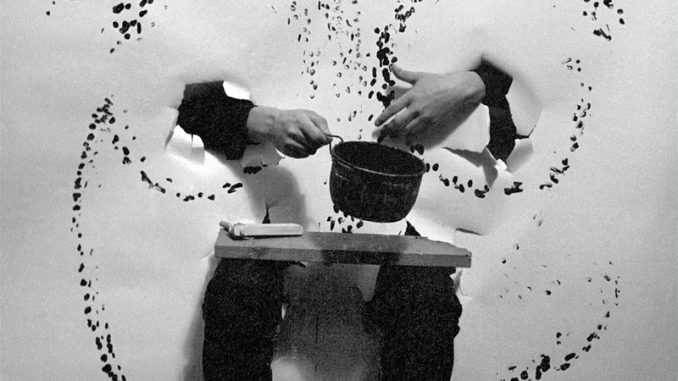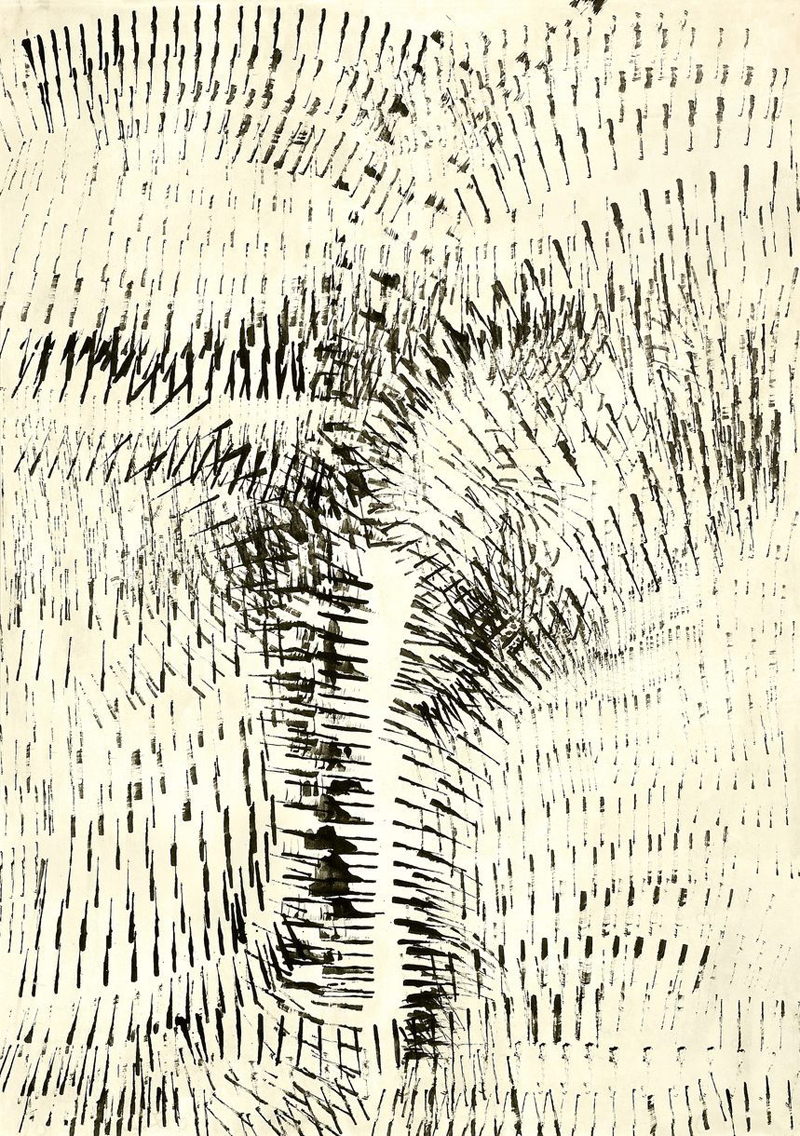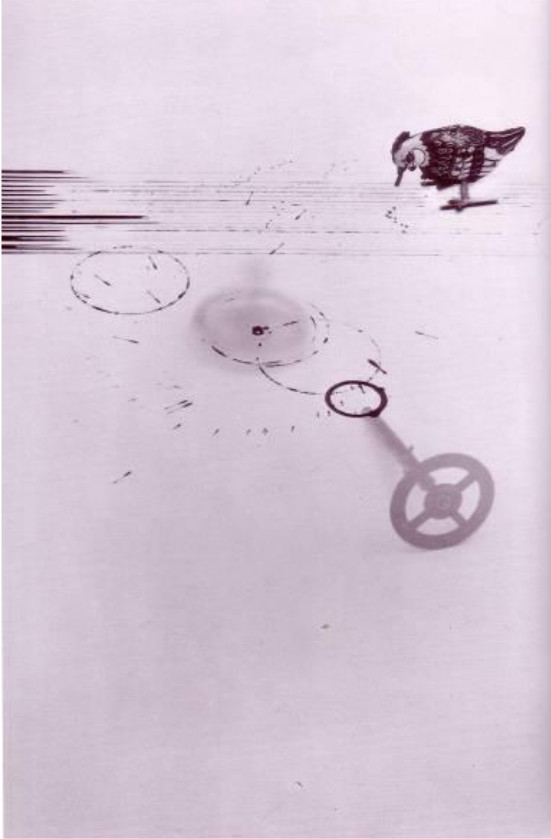
Sometimes you stumble upon a gift. The thing about stumbling, however, is you first have to be moving and to find a gift you have to have chosen a direction.
I came to the certainty that what prevails in the world is correlation: sound is connected to the visual and the visual cannot exist without sound. Everything a human does is connected: visual and acoustic phenomena complement one another.
That’s Czech artist Milan Grygar talking about his Analog Drawings (Akustická kresby), works he began in the 1960s where the sound of the mark-making informs the moving of the marks and the importance of each element becomes equal. This quote also perfectly captures a motivating force behind Twittering Machines—what prevails in the world is correlation.

The line has a certain energy which can be transformed into sound.

When I found out there was this relation between hearing and sight, as regards rhythm or image of sound, it is a union, in principle, in the person himself. This was the main reason why I decided to do the acoustic drawings…
We can find correlations in Milan’s work to others including Paul Klee and John Cage but it’s important to note that Milan developed his art in relative isolation as the outside modern art world was largely kept out of his youth and young adult life, first by the Nazi’s and then the Soviets.
If we want a scientific correlation between art and sound, we need look no further than synesthesia. From Wikipedia:
Synesthesia is a perceptual phenomenon in which stimulation of one sensory or cognitive pathway leads to automatic, involuntary experiences in a second sensory or cognitive pathway. People who report a lifelong history of such experiences are known as synesthetes.
I had an art teacher in college who claimed she heard music when painting and that music was created in her mind by the colors she used. This was before synesthesia was welcomed back into the scientific community having been shunned by behaviorism (1930 – 1980) due to synesthesia’s demand for subjective study. Of course the Greek’s were aware of the phenomena as were many others throughout history including Carl Jung who wrote of “sound colors” in his 1912 work Symbols of Transformation. Of course we just thought our teacher was eccentric, i.e. making stuff up.
If you are thinking about another correlation right about now, so am I—in this wonderful hobby of ours, there is an endless debate between the subjective and objective approach in terms of determining the relative performance of hifi components. This ‘debate’ is perpetuated by the belief that the correct approach is limited to either the subjective or the objective, making one right and the other wrong. If we limit our sphere of influence in terms of informing this ‘debate’ to just the words in this tiny article, we know, for a fact, that this ‘debate’ is rooted in nothing more than self-serving doctrine because the truth exists somewhere in between. It always does.
I also think it wise, when talking about any disorder, to keep another word in mind: spectrum. As we’ve come to learn, the idea that people can be categorized as either being part of Group A, having a disorder, or Group B, not having a disorder, is often plain old-fashioned wrongheaded. Feel free to replace “disorder” with just about any other word that supposedly defines any perceived dichotomy.
I recommend taking the time, all of 25 minutes, to watch and learn about Milan Grygar. If you do, you’ll be rewarded with the beauty of an open mind.

